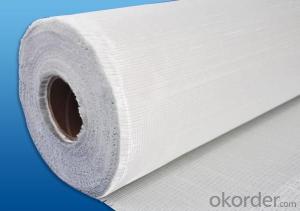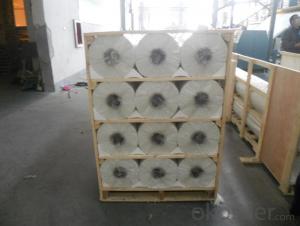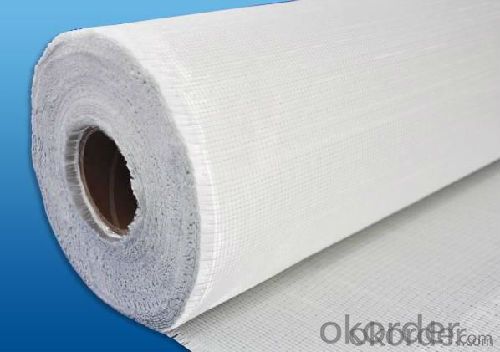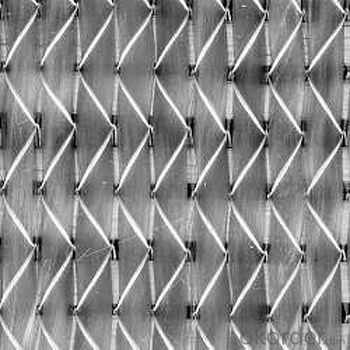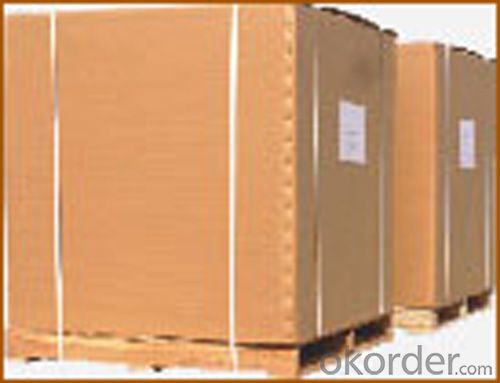Fiberglass Multiaxial Fabric-UD series(0° or 90°)450/50g
- Loading Port:
- Shanghai
- Payment Terms:
- TT or LC
- Min Order Qty:
- 2000 m²
- Supply Capability:
- 3000000 m²/month
OKorder Service Pledge
OKorder Financial Service
You Might Also Like
Description & application | |||||||||||||||||||||||||||||||||||||||||||||||||||||||||||||||||||||||||||||||||||||||||||||||||||||||||||||||||||||||||||||||||||||
◎ This fabric is made of fiberglass roving which are aligned at 0° or 90° into one layer of roving by stitching together with or without one layer of chopped strand. It is mainly applied in the hand lay up, RTM and other close molding processes.
| |||||||||||||||||||||||||||||||||||||||||||||||||||||||||||||||||||||||||||||||||||||||||||||||||||||||||||||||||||||||||||||||||||||
| |||||||||||||||||||||||||||||||||||||||||||||||||||||||||||||||||||||||||||||||||||||||||||||||||||||||||||||||||||||||||||||||||||||
◎ Small gap between fibers, Increased strength, reduced product weight and better surface finish. | |||||||||||||||||||||||||||||||||||||||||||||||||||||||||||||||||||||||||||||||||||||||||||||||||||||||||||||||||||||||||||||||||||||
| |||||||||||||||||||||||||||||||||||||||||||||||||||||||||||||||||||||||||||||||||||||||||||||||||||||||||||||||||||||||||||||||||||||
| |||||||||||||||||||||||||||||||||||||||||||||||||||||||||||||||||||||||||||||||||||||||||||||||||||||||||||||||||||||||||||||||||||||
| |||||||||||||||||||||||||||||||||||||||||||||||||||||||||||||||||||||||||||||||||||||||||||||||||||||||||||||||||||||||||||||||||||||
Each roll is wrapped by PE film and then packed into carton. Stacking in bulk or palletized is available; the pallet shall be no higher than 2 layers.
| |||||||||||||||||||||||||||||||||||||||||||||||||||||||||||||||||||||||||||||||||||||||||||||||||||||||||||||||||||||||||||||||||||||
FAQ
1. How will we guarantee the quality?
a, ISO 9001-2008 quality control system;
b, Strict and regular quality control in production;
c, Inspeciation when loading into container before shippment;
d, Sample stock for one year for quality tracing and record.
2. What is your MOQ?
Our MOQ is one pallet.
3. Why Choose us?
CNBM is a stated own company, provide the guarantee for the best quality, best service and safety business.
- Q:What is the expected lifespan of fiberglass mat tissue in cleanroom applications?
- The expected lifespan of fiberglass mat tissue in cleanroom applications can vary depending on several factors. Generally, fiberglass mat tissue is known for its durability and long-lasting properties when used in cleanrooms. However, the lifespan can be influenced by variables such as the level of contamination, cleaning procedures, maintenance practices, and the overall conditions of the cleanroom environment. With proper care and regular maintenance, fiberglass mat tissue can typically last for several years in cleanroom applications. Frequent cleaning and replacing any damaged or contaminated sections can help extend its lifespan. It is also essential to follow the manufacturer's guidelines and recommendations for cleaning and maintenance to ensure optimal performance and longevity. Additionally, the quality and grade of the fiberglass mat tissue can also impact its expected lifespan. Higher-quality materials tend to be more resilient and can withstand environmental stressors better than lower-grade options. Therefore, investing in high-quality fiberglass mat tissue can contribute to a longer lifespan in cleanroom applications. In summary, while there is no definitive answer to the exact expected lifespan of fiberglass mat tissue in cleanroom applications, regular maintenance, proper care, and utilizing high-quality materials can significantly increase its longevity.
- Q:What are the different reinforcement densities available for fiberglass mat tissue?
- The different reinforcement densities available for fiberglass mat tissue can vary depending on the specific manufacturer and product. However, common options include low density (lightweight), medium density, and high density fiberglass mat tissues. These densities are designed to provide different levels of strength, flexibility, and durability for various applications in industries such as construction, automotive, and marine.
- Q:Does fiberglass mat tissue require any special curing conditions?
- Fiberglass mat tissue does not typically require any special curing conditions. It can be cured at room temperature without the need for high temperatures or specific curing environments. The curing process of fiberglass mat tissue involves the application of resin, which hardens and bonds with the fibers over time. This curing can occur naturally at room temperature or can be accelerated with the use of heat or catalysts. However, it is important to follow the manufacturer's instructions and recommendations for the specific type of fiberglass mat tissue being used, as some variations may have specific curing requirements.
- Q:Is fiberglass mat tissue compatible with different resin systems?
- Yes, fiberglass mat tissue is compatible with different resin systems. Fiberglass mat tissue is a versatile material that can be used with various types of resin systems, including polyester, epoxy, and vinyl ester resins. It has excellent wet-out properties, meaning that it can easily absorb and distribute the resin evenly throughout the mat. This compatibility allows for the creation of strong and durable composite structures in a wide range of applications such as automotive, marine, construction, and aerospace industries. However, it is important to consider the specific properties and characteristics of the resin system being used in order to ensure optimal performance and compatibility with the fiberglass mat tissue.
- Q:What are the applications of fiberglass mat tissue?
- Fiberglass mat tissue is commonly used in various applications, including but not limited to, the construction industry, automotive manufacturing, and the production of composite materials. It is used as a reinforcement material in the construction of walls, roofs, and floors, providing strength and durability. In the automotive industry, fiberglass mat tissue is used for sound insulation and as a reinforcement material in the production of car parts. Additionally, it is widely utilized in the manufacturing of composite materials, such as fiberglass-reinforced plastics, due to its high strength-to-weight ratio and excellent corrosion resistance.
- Q:Can fiberglass mat tissue be used for insulating refrigeration units?
- Yes, fiberglass mat tissue can be used for insulating refrigeration units.
- Q:How does fiberglass mat tissue compare to polystyrene insulation?
- Fiberglass mat tissue and polystyrene insulation serve different purposes as insulation materials, each with their own unique characteristics and advantages. Fiberglass mat tissue is composed of woven strands of glass fibers that form a mat. It is commonly used for heat and sound insulation. This material is known for its exceptional thermal insulation properties, effectively resisting heat transfer in both hot and cold environments. Additionally, it is resistant to moisture and does not facilitate the growth of mold or mildew. On the other hand, polystyrene insulation is a foam material made from expanded polystyrene beads. It is widely used in construction due to its ability to provide efficient thermal insulation and its adaptability to different spaces through shaping or cutting. Polystyrene insulation is recognized for its high compressive strength, making it ideal for applications requiring support. It is also lightweight, resistant to moisture, and exhibits excellent durability. When comparing fiberglass mat tissue to polystyrene insulation, several notable differences should be considered. Fiberglass mat tissue is generally more flexible and easier to install on irregular or curved surfaces. Moreover, it offers superior fire resistance, as it does not burn or emit toxic gases when exposed to flames. However, fiberglass mat tissue tends to be more expensive than polystyrene insulation and may necessitate additional protective measures during installation, such as gloves and masks, due to potential skin and respiratory irritation. Conversely, polystyrene insulation is more cost-effective and simpler to handle and install compared to fiberglass mat tissue. It also exhibits enhanced resistance to moisture, making it suitable for applications in humid environments or areas prone to water exposure. Nevertheless, polystyrene insulation is more flammable than fiberglass mat tissue and releases toxic gases when burned. In conclusion, the choice between fiberglass mat tissue and polystyrene insulation depends on the specific requirements of the insulation project. Fiberglass mat tissue excels in thermal insulation, fire resistance, and resistance to moisture and mold. On the other hand, polystyrene insulation offers efficient thermal insulation, ease of installation, and high compressive strength. Ultimately, factors such as cost, installation requirements, fire resistance, and moisture resistance should be carefully considered when selecting between fiberglass mat tissue and polystyrene insulation.
- Q:How does fiberglass mat tissue compare to other reinforcing materials, such as carbon fiber or kevlar?
- Various industries commonly use fiberglass mat tissue, carbon fiber, and Kevlar as reinforcing materials due to their high strength and durability. However, they differ in composition and properties, resulting in different applications and performance characteristics. Fiberglass mat tissue consists of fine glass fibers randomly bonded together with a binder. It possesses excellent tensile strength, corrosion resistance, and affordability, making it widely used in construction, automotive, and marine industries. Additionally, its high flexibility enables easy conformation to complex shapes. However, it may not possess the same strength-to-weight ratio as carbon fiber or Kevlar. Carbon fiber comprises tightly woven thin strands of carbon atoms, creating an incredibly strong and lightweight material. It boasts a higher tensile strength than fiberglass mat tissue, making it suitable for applications that prioritize weight reduction and high strength, such as aerospace, sports equipment, and automotive components. Furthermore, carbon fiber exhibits exceptional stiffness and fatigue resistance, albeit at a higher cost compared to fiberglass mat tissue. In contrast, Kevlar is an aramid fiber renowned for its exceptional strength-to-weight ratio, impact resistance, and abrasion resistance. It finds extensive use in applications requiring high impact resistance, including bulletproof vests, helmets, and protective clothing. While Kevlar surpasses fiberglass mat tissue in strength, it may lack the same level of rigidity as carbon fiber. Moreover, Kevlar is more expensive than fiberglass mat tissue but less expensive than carbon fiber. In summary, fiberglass mat tissue, carbon fiber, and Kevlar possess unique characteristics and advantages. Fiberglass mat tissue is versatile, cost-effective, and flexible, while carbon fiber offers outstanding strength and stiffness. Kevlar excels in impact resistance and durability. The choice of reinforcing material depends on specific application requirements, cost considerations, and desired performance characteristics.
- Q:Can fiberglass mat tissue be used for repairing fiberglass kayaks?
- Yes, fiberglass mat tissue can be used for repairing fiberglass kayaks. Fiberglass mat tissue is a lightweight material that is commonly used in the repair and reinforcement of fiberglass products, including kayaks. It is designed to be easily moldable and conform to the shape of the damaged area. By applying the fiberglass mat tissue with an epoxy resin, it can effectively reinforce and bond the damaged sections of a fiberglass kayak, restoring its strength and durability. It is important to ensure that the damaged area is properly prepared and the fiberglass mat tissue is applied correctly to achieve a strong and long-lasting repair.
- Q:How does the porosity of fiberglass mat tissue affect its performance?
- The porosity of fiberglass mat tissue directly affects its performance. Higher porosity allows for better resin absorption, resulting in improved bonding and strength of the fiberglass composite. Additionally, increased porosity enhances the mat's ability to trap and hold air, providing better insulation and soundproofing properties. Conversely, lower porosity may lead to insufficient resin penetration and weaker composite structures. Therefore, porosity plays a crucial role in determining the overall performance and functionality of fiberglass mat tissue.
1. Manufacturer Overview |
|
|---|---|
| Location | |
| Year Established | |
| Annual Output Value | |
| Main Markets | |
| Company Certifications | |
2. Manufacturer Certificates |
|
|---|---|
| a) Certification Name | |
| Range | |
| Reference | |
| Validity Period | |
3. Manufacturer Capability |
|
|---|---|
| a)Trade Capacity | |
| Nearest Port | |
| Export Percentage | |
| No.of Employees in Trade Department | |
| Language Spoken: | |
| b)Factory Information | |
| Factory Size: | |
| No. of Production Lines | |
| Contract Manufacturing | |
| Product Price Range | |
Send your message to us
Fiberglass Multiaxial Fabric-UD series(0° or 90°)450/50g
- Loading Port:
- Shanghai
- Payment Terms:
- TT or LC
- Min Order Qty:
- 2000 m²
- Supply Capability:
- 3000000 m²/month
OKorder Service Pledge
OKorder Financial Service
Similar products
New products
Hot products
Related keywords

